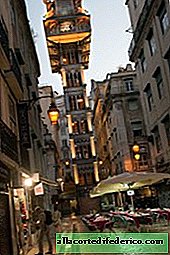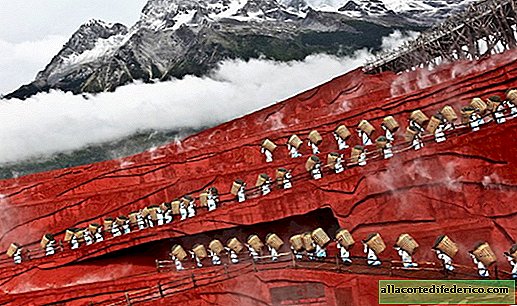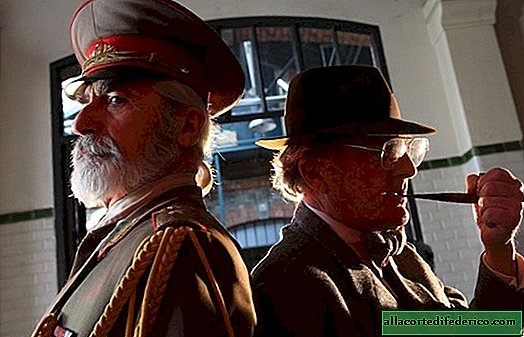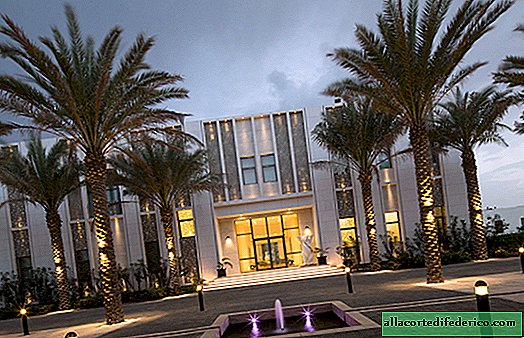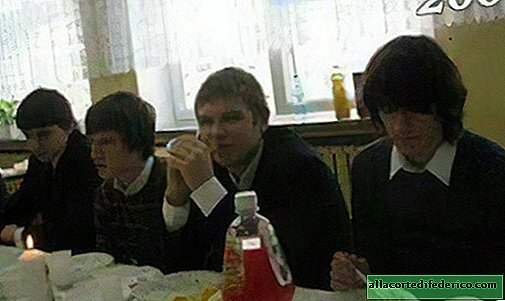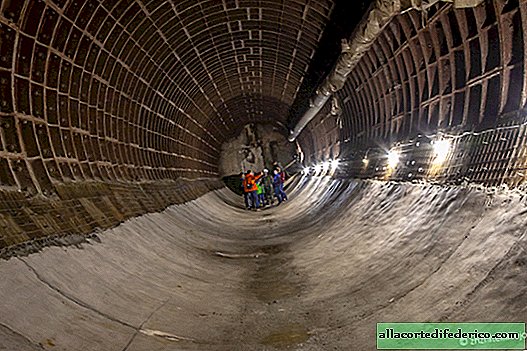The city in which people live on trees growing out of the water
After reading the headline and recognizing Amsterdam's iconic narrow houses, the skeptical reader will certainly decide that the author based his own hallucinations on this post, having previously visited one of the coffee shops and sat down with a notepad on the narrow canal, like a waist, from the Red Light District quarter.

In view of the halo of legally accessible carnal pleasures created around the city and the fogging of consciousness with the gifts of nature, its rich architectural and cultural heritage recedes into the background, if not into the background. Overgrown with parasites of prevailing stereotypes, Amsterdam proudly carries a banner of imaginary permissiveness, well-groomed tolerance and openness to immigrants stuck in a basket with tulips among the rickety "dancing" merchant houses.
If you take a blue pill, close the browser tab and the story ends. You wake up in pajamas with elephants in your bed and believe that it was a dream. If you take a red pill, you will come with me under a cat to the city of miracles. I’ll tell you why people live in trees and why Amsterdam is one of the best European cities for a weekend trip or for a walk during a long dock.

The KLM Boeing board breaks through a cloudy veil that is thick as a foam of a good-quality cappuccino and, pushing through the drizzling rain, enters Schiphol airport. You, foreseeing a cool spring breeze and high humidity from the canals of the Dutch Venice, tighten your scarf and raise your jacket collar. After only half an hour, the electric train throws you into the square near the central station, and you take a vigorous and confident step, constantly turning around and jumping from the signaling cyclists, you go along Damrak street to the very heart of the capital of the Netherlands.

Walking along the horseshoe-shaped embankments that cut through the plan of the historical center of the canals, you quickly get used to the characteristic sweetish intoxicating smell, evoking memories of a carefree childhood and a vacation with my grandmother in the village, when attempts to burn a sheaf of stale raw straw with worn socks still succeeded. And it’s hard to hide from it - after a minute or two a noisy company passing by or a playful wind will again throw a portion of embarrassment and disgust (or vice versa, pleasure - there are connoisseurs) to your olfactory receptors.
In order not to drown in the channel under the weight of boilerplate images, we better turn our eyes to narrow, low-rise houses that leaned over and put all the rest of their strength so as not to form under their own weight. Supporting each other, as if they were pretty drunk and trying to stay on their feet at all costs near a wineglass, they are a symbol of Amsterdam and are full of facades and parallelograms of windows from tourist postcards.

Three or four centuries ago, Amsterdam bore the status of the trading capital of Europe, if not the whole world. Then merchant houses grew like mushrooms after rain on swampy Dutch soil, where shops were located on the ground floors, and warehouse premises were located above, in order to somehow minimize damage to goods from possible flooding. Merchants, as usual, always knew how to count money, probed all possible loopholes in laws, hid real incomes from the treasury, and were in no hurry to pay taxes in full. Therefore, having learned about the duty for the width of the facade of the building, they laid in the project a minimally narrow and elongated building - the width of the narrowest building in the city barely exceeds two meters. Here the studio in the most musty sleeping bag on the outskirts will seem like royal mansions!

The relief features made significant adjustments to the construction - akin to Venice, the foundation of Amsterdam houses was supported by wooden piles, which had decayed fairly over the past centuries. With the development of technology, piles after a couple of centuries were partially replaced by concrete and began to drive deeper into the soil, bypassing a layer of clay and peat, which still did not save the local architecture from the inevitable subsidence. It seems that as soon as one house collapses or bends toward the channel more than usual, the rest of the honest company will fall, like a series of dominoes that are filigree lined up one after another.

With the light hand of Erasmus of Rotterdam, a prominent thinker, scientist and writer of his era, Amsterdam received a poetic elven image of the city, where "people live on trees growing from the water." And the imagination, with such enticing words, has already begun to paint pictures of distinctive tribes that weave their huts on the crowns of mangroves somewhere in the remote and unexplored corners of the Amazonian jungle. Just piles, no romance and adventurism adventure.

The trained eye of the surveyor and without instruments will detect both a slight obstruction of the facades, and beams with hooks, still sticking out from under the roof and used for their intended purpose. Oversized cargoes had to be lifted to the upper storage floors exclusively through windows, and in order not to repair shutters after each goods receipt and not to insert broken windows, the facade was slightly tilted forward. It is still difficult to turn around on the narrow stairs of houses. And the hostess decided to replace the sofa or kitchen set in pre-Yekee times - be kind, open the windows wide open and convene a team.

The image of the trading capital attracted migrant flows to Amsterdam, and so far the Dutch have been rather condescending to those who come for a better life. Here it’s easy for a cashier in a store to not know a word in Dutch, having lived in the city for not three or five years. And in situations where a Russian compassionate lady would cry out in her hearts “Come here!” When the Frenchman doesn’t lead an eyebrow, and pretending that she doesn’t understand a word, she will continue her polite “s'il vous plaît, je vous en prie ... ", the Dutchman will calmly respond in English with a verified perfect pronunciation.

There are places for shopaholics in Amsterdam to leave their honestly earned euros - from the Dam Square several trade arteries branch out in different directions, offering mixed clothes, home furnishings and all sorts of things, from the abundance of which one may feel dizzy for every taste and thickness of the wallet. Just know - take coffee breaks, sweets, churros or falafel, sticking to the next window or overtaking couples idly and leisurely walking on a clear day on tram routes.

About 9 years ago, when I still hadn’t really thought about traveling, and even more so about travel blogging, and after graduating from university I almost immediately left for a one-year internship in Norway, only primitive ideas about this or that country hung in my young head, based on books, television shows and rare articles from the world wide web. It so happened that the route of the first European trip originated in the capital of the Netherlands. Since that time, once again having subsequently visited Amsterdam on a cloudy January day, I have hatched a long-term plan for returning to more pleasant weather.

Although Amsterdam does not lose its charm in the dim light of the offseason, but on a sunny day it blooms with a bright bouquet of tulips, to which tourists swarm from all over Europe and the world. KLM Airlines now often offers tickets across Europe at reasonable prices, where Amsterdam will serve as an intermediate point of your route. A few hours in Schiphol chairs easily, with minimal effort and cost, turn into an impressionable city walk.

Weather summed up? The smartphone’s camera is jam-packed with pictures of bridges, canals and gingerbread merchant houses, but want to add a bit of high art to the walk? Museums in the square around letters that never suffer from attacks of loneliness I amsterdam satisfy the most demanding esthete - for Rembrandt and Vermeer we go to the Rijksmuseum, for contemporary art - to Stedelijk; nearby Van Gogh fans can see the world's largest collection of works by the painter. Immediately Moco - with an exhibition of works by English street art master Banksy and pop art legend Roy Lichtenstein.

A month and a half will pass - and the clatter of wheels of suitcases along the cobbled streets of Amsterdam will intensify many times. The flowering season of tulips and the opening of the Keukenhof royal park traditionally cause unhealthy excitement and attract hordes of Japanese with spreading tripods and macro lenses to each flower bed.


Residents of the city are not very worried about the branding of their iron horses, do not weigh the wheel with bicycle computers, do not seek out the best brakes and a lightweight frame. A bicycle for them is just a means of transportation, which, moreover, can easily be stolen while they scribble the next quarterly report in the walls of their native office. And only the most creative ones pick up the bright color of the paint, attach baskets and other nifty little sticks, and then park their mule on the railing of the bridges, taking pride of place and collecting likes on the city’s Instagrams.

Oh, Amsterdam! In the cold winter, brave men cut through your frozen canals on skates, and pleasure boats and catamarans travel with tourists in late spring and summer, while locals take covers off their boats and have picnics, moving along the waterways of the old city imposingly and quietly. clinking clinking glasses with Amstel.

There was no trace of the morning fog and rain - closer to dusk, the city began to sing, calling for a delayed spring and the sun, which had gone away for urgent matters.

"What a bore! He promised a city of miracles, but in the end, what? You saw these houses once, and that's enough!" But no, they sink into the soul and memory, and there is a desire to live a month in Dutch. Ride your bike in the morning to the nearest farmers market and fill the basket with the freshest cheese, grain bread and vegetables.

Having hooked your bike to the railing of the bridge, go up the narrow stairs home and do not hide behind the deaf curtains from tourists scurrying along the canals.

However, not all of Amsterdam is so gingerbread - for modern architecture it is worth going to the outskirts where the legs of an average tourist do not reach. After all, the abundance of museums, bars, coffee shops and shops occupying the first floors of historical buildings keeps them trapped within the old city every day.




